
Eyelid Surgery
What is Eyelid Surgery?
Eyelid surgery, also known as an eye lift or blepharoplasty, is a cosmetic procedure for rejuvenating the upper and/or lower eyelids. During eyelid surgery, the surgeon removes excess skin, drooping muscles, and excess or displaced fatty tissue.
Schedule a ConsultationWhy Have Eyelid Surgery?
Elastin is what keeps the skin taught, so as it fades the skin loses its elasticity and begins to sag. The aging process, when combined with gravity and some genetic factors, can lead to drooping, sagging upper eyelids. These sagging lids can make you feel unattractive, and can even begin to hood the eyes and obstruct your vision.
The aging process can also lead to droopiness, bulges, puffy bags, and wrinkles on the lower eyelids. These can make the patient look older, more tired, and less energetic. The sagging in the lower eyelid can also expose the whites under the patient’s iris, which can be uncomfortable along with being aesthetically undesirable.
Eyelid surgery can correct aesthetic concerns in both the upper and lower eyelids, along with correcting issues that can affect vision or cause physical discomfort. The procedure can be combined with a variety of other treatments, including Botox injections, facelifts, and brow lifts, giving the patient a more comprehensive facial rejuvenation.
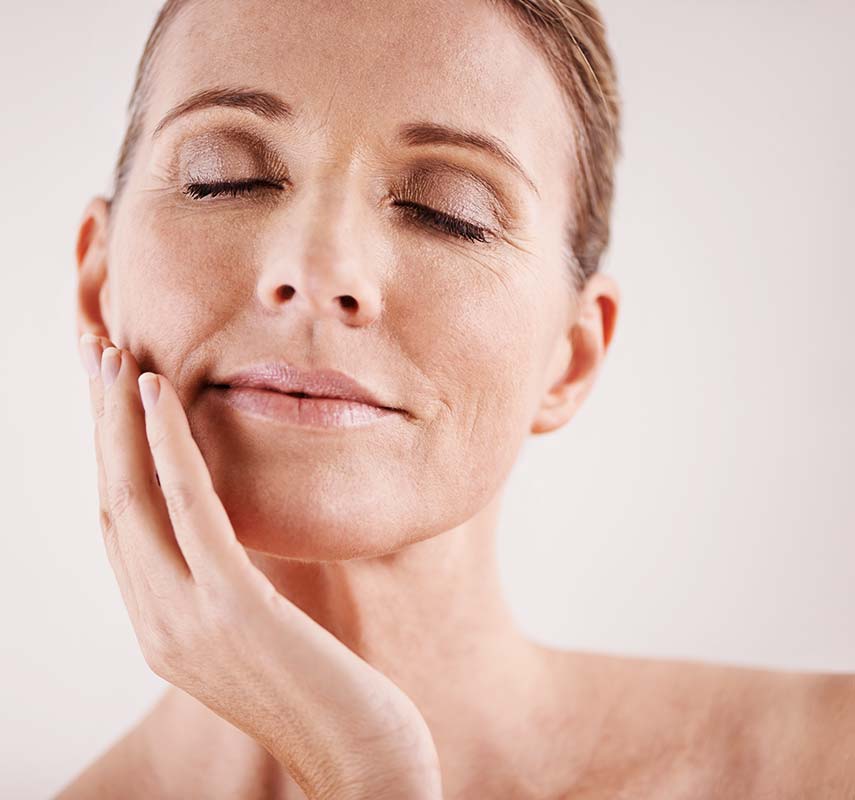
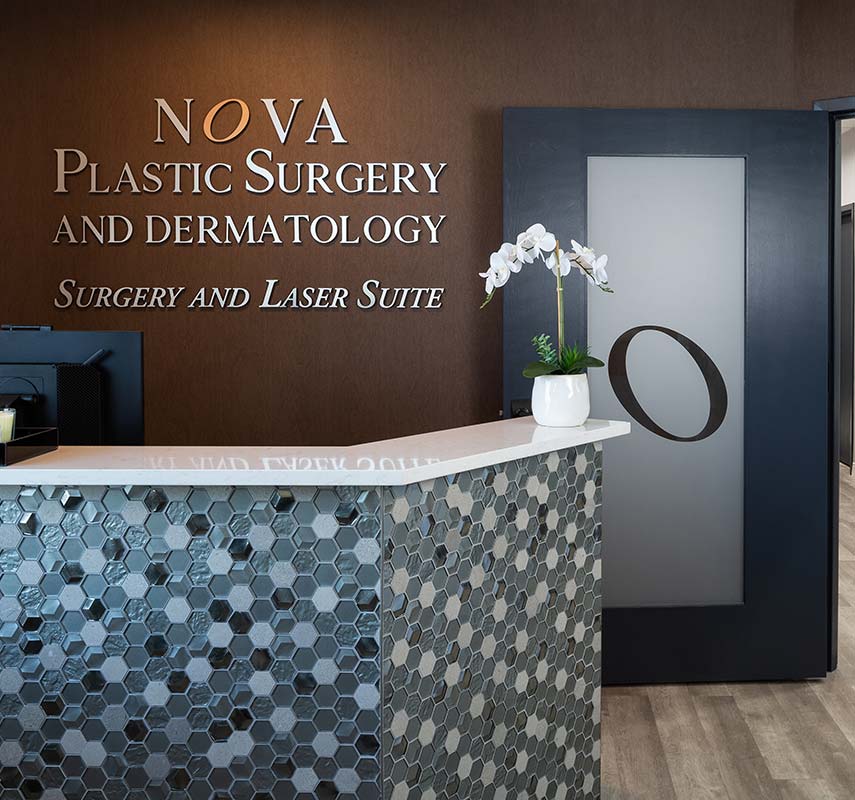
Am I A Good Candidate For Eyelid Surgery?
They should not have any serious conditions of the eye, and should be in good general health.
Eyelid surgery candidates can be male or female of any age, though most patients are over 35 years old. Some patients who have redundant eyelid skin because of genetics may be younger than that.
Non-smokers are generally better candidates for eyelid surgery than smokers because smoking interferes with the healing process. If you do smoke, you should quit for at least six weeks before and after the procedure.
How to Prepare for Eyelid Surgery
He may want to see your medical records from your eye doctor, to make sure you don’t have any eye conditions that could interfere with surgery.
You will need to stop smoking before eyelid surgery, and be prepared to stay smoke-free until the healing process is over. Your surgeon may also adjust any medications you are taking, along with herbal supplements that could aggravate bleeding post-operatively. It will be necessary to arrange for someone to drive you home after the surgery. At home, have ice packs ready, along with whatever over-the-counter pain medication your doctor recommends, and a container of artificial tears to help combat any eye dryness that occurs during recovery.
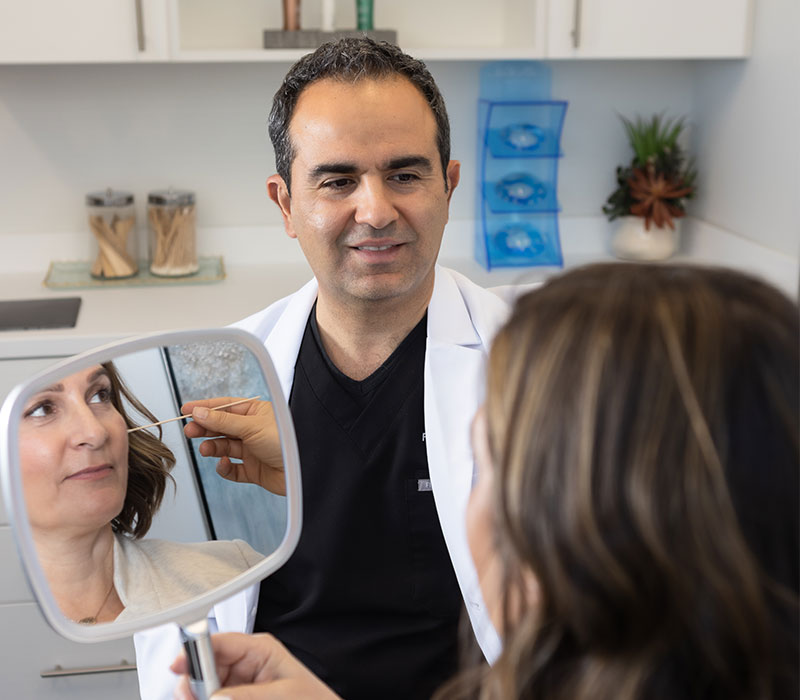
What Happens During Eyelid Surgery?
Upon arriving at the surgical center, you will be prepped for surgery and anesthesia will be administered. If you are getting both the upper and lower eyelids corrected, your surgery will take around two hours.
Upper Eyelid Surgery
The incision for upper eyelid surgery will be placed in the crease of the upper eyelid, where it will be concealed by the natural contours of your eye. The incision will extend just beyond the outer corner of the eye, into the crow’s feet area. The surgeon will separate the skin from the underlying tissues once the incision is made, and will remove excess fat or muscle tissue. The skin will be re-draped in place, excess skin will be removed, and the incision will be closed.
Lower Eyelid Surgery
The incision for lower eyelid surgery generally runs just below the lower lash line, following the contours of the eyelid. Excess skin and fat are removed through this incision, and any issues with loose muscles can be corrected. If you only need to have fat removed, your surgeon might elect to make the incision inside the lower lid, where it will be totally hidden. This type of incision is known as a transconjunctival incision, and it does not allow for the removal of excess skin. After the work is completed, the incision will be closed.
The surgeon will close the upper and lower incisions using sutures, surgical tape, surgical skin adhesives, or some combination.
Before & After – Upper Eyelid
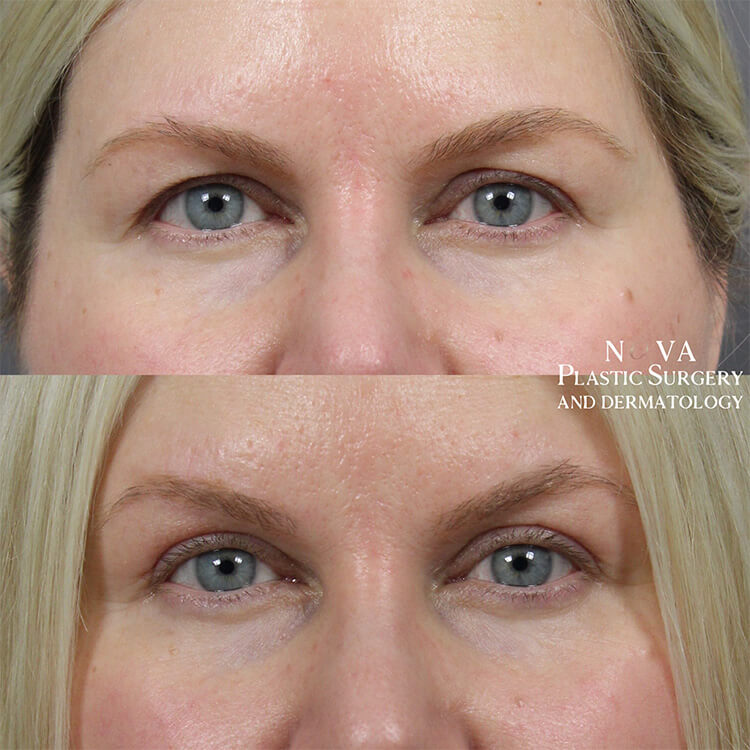
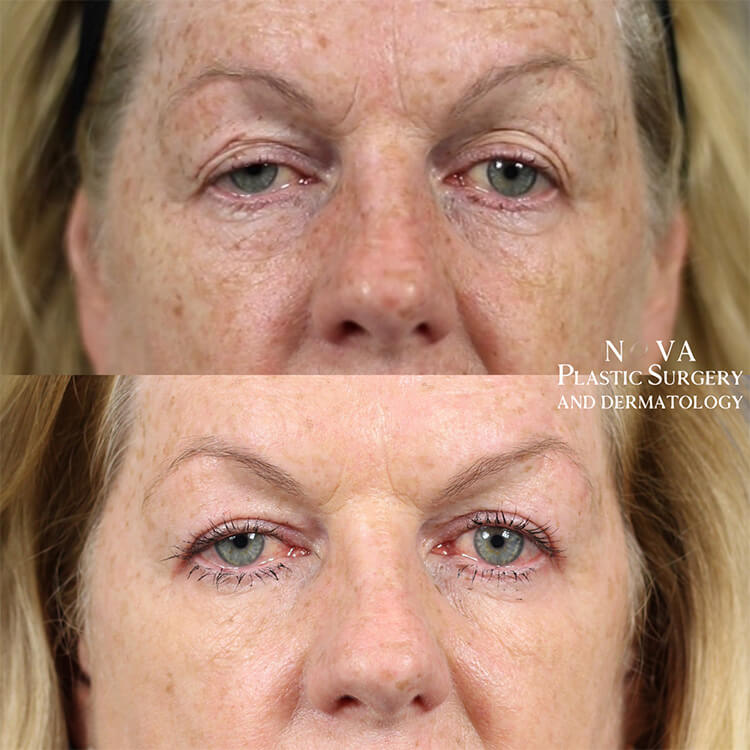
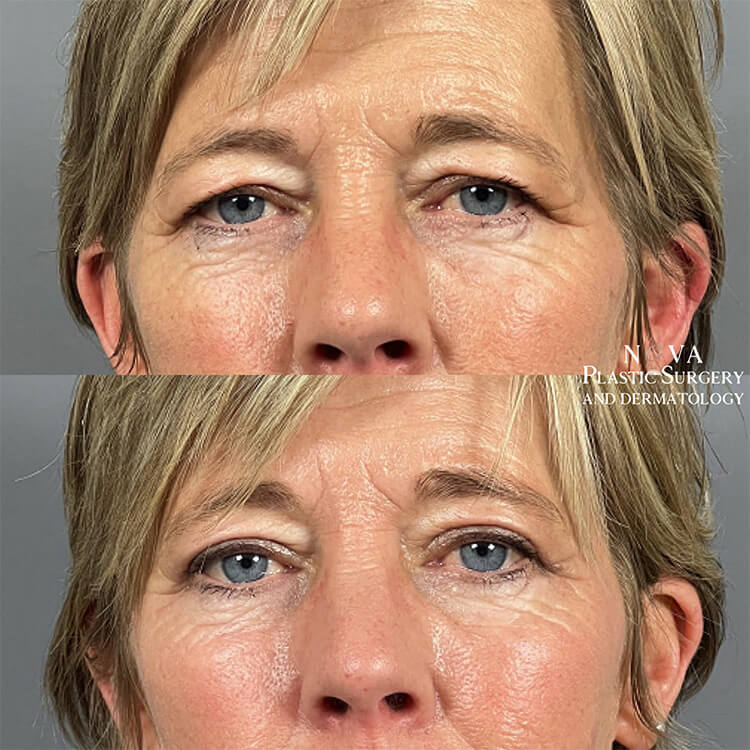
Before & After – Lower Eyelid
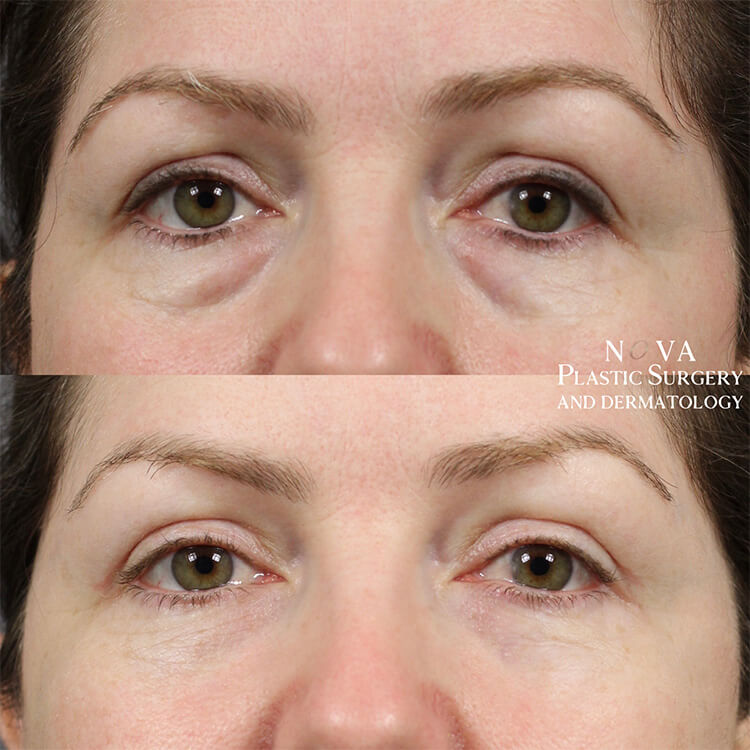
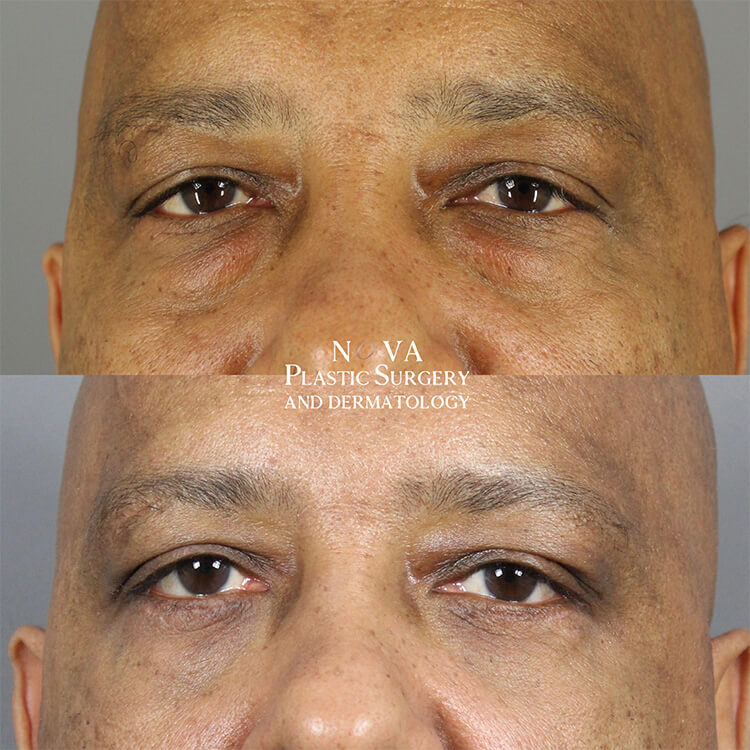
What is Eyelid Surgery Recovery Like?
After eyelid surgery, you will be taken to a recovery room while the anesthesia wears off. Your vision will be a little blurry, and there will be ointment and possibly loose bandages over the incisions. Some patients can go home after a small period of observation, and others will need to stay overnight.
You can expect a bit of bruising and swelling during eyelid surgery recovery. It will begin to resolve after 48 to 72 hours. There might be a feeling of tightness near the incision site, itching, dryness in the eyes, or discomfort. You can manage the discomfort with over-the-counter medication, or your doctor can prescribe you something.
The stitches will come out around seven days after surgery, at which point you may be cleared to wear makeup to cover any remaining bruising. Some patients will continue to have blurriness in their vision for a few days. Some may experience light sensitivity.
During your healing process, wear dark sunglasses when you’re outside. Sleep on a few extra pillows to keep your head elevated, which will help with the swelling. If your eyes are itchy, use artificial tears to relieve it. Discomfort and swelling may also be relieved with the use of cold compresses.
Depending on the type of work you do, you should be able to go back to work within ten days or less. Save more strenuous physical activity until you are cleared by your physician. Your eyes should look back to normal within two to four weeks, though the incisions may still be visible for several months. If you are combining eyelid surgery with other procedures, your recovery time may vary.
Contact UsWhat are the Final Results of Eyelid Surgery? Are They Permanent?
The permanence of the results of eyelid surgery depends on what was done during your procedure. If the surgeon removed fat to get rid of bulges or under-the-eye bags, that fat won’t return. However, your remaining skin will continue to age naturally, so fine lines might recur after several years. If you had upper eyelid surgery to correct drooping, the condition may recur as the skin and muscles in your forehead age. Your surgeon may recommend a brow lift to correct that condition.
Even if some aspects of eyelid surgery are not permanent, they should last at least several years and possibly a lifetime (depending on your age at the time of surgery, combined with lifestyle factors). Not smoking and staying out of the sun can help the results last as long as possible.
What Are the Risks With Eyelid Surgery?
These risks include infection, bleeding, skin discoloration around the eyelid, eye dryness, vision loss, loss of the ability to close the eyes fully, nerve damage, changes in skin sensation, asymmetry, and the need for future revisional surgery.
You can minimize your risk of complications by selecting a Board Certified Plastic Surgeon in Northern Virginia for eyelid surgery. Board Certified surgeons are properly trained and more than adequately equipped to perform the procedure. They use all necessary sterilization procedures, and utilize first-rate staff and surgical centers. Our Board Certified surgeons, will explain all the necessary pre- and post-operative steps to take to help minimize the occurrence of complications.
Will Insurance Cover Eyelid Surgery?
If you are having eyelid surgery because of upper eyelid hooding that is interfering with your vision, your insurance may cover the procedure. You will need to consult your insurance company to be sure.
